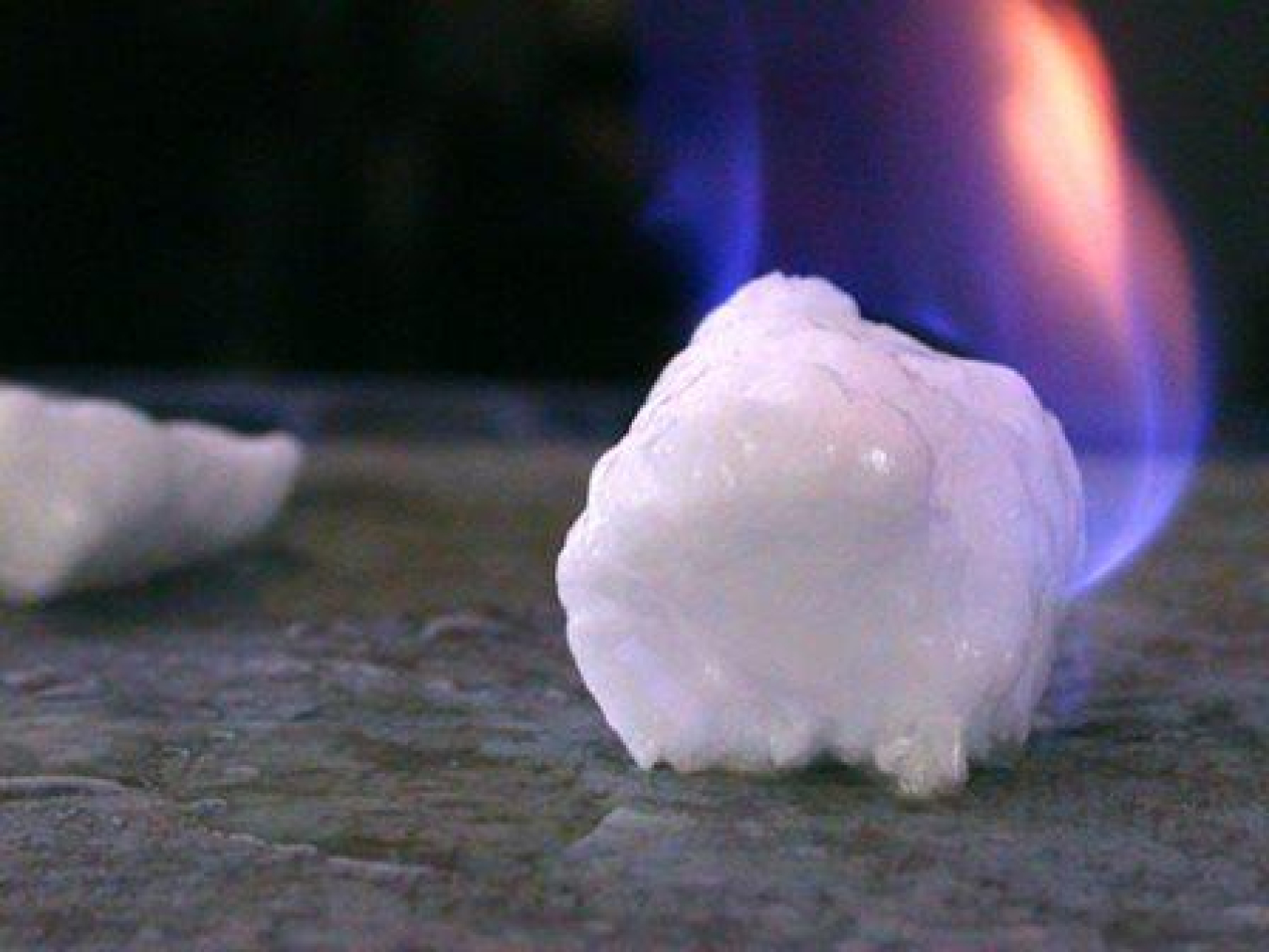One potential source of fossil energy could exceed the energy content of all other known fossil fuels combined—and that’s natural gas hydrate.
Hydrocarbons and Geothermal Energy Office
May 10, 2017
Everyone hears about the vastness of our more traditional fossil fuel resources. But one potential source of fossil energy could exceed the energy content of all other known fossil fuels combined—and that’s natural gas hydrate.
Natural gas hydrates – natural gas trapped in ice-like cages of water molecules – can be found trapped under arctic permafrost, as well as beneath the ocean floor. They can also form during drilling and production operations. When gas hydrate is warmed or depressurized, it reverts back to natural gas and water.
When brought back to the earth's surface, one cubic foot of methane hydrate releases 164 cubic feet of natural gas. Estimates of potential energy resources in global gas hydrates are on the order of tens of thousands trillion cubic feet (Tcf) of natural gas, while all other proven global natural gas resources are estimated to be nearly 7,000 Tcf. That’s a lot of untapped potential energy.
So methane hydrates represent a massive natural storehouse of energy that hold significant potential as a future energy source. But first we need to better understand the locations and scale of this resource and the nature of hydrate-bearing geological formations. The Office of Fossil Energy’s National Energy Technology Laboratory is currently managing a broad suite of fundamental research into gas hydrates, including six new research projects that aim to develop the science and technology to assess gas hydrates occurrence in nature, and reveal their potential as a future energy resource.
This month, FE is partnering with a research consortium led by the University of Texas-Austin to conduct a three-week drilling and coring expedition to a site where prior DOE-funded drilling discovered resource-quality gas hydrates in the deepwater Gulf of Mexico. This expedition will gather samples from the hydrates deposit in specialized equipment that will maintain those samples in their natural state throughout recovery and transfer into laboratory devices for analyses. You can follow the progress of that expedition here.

